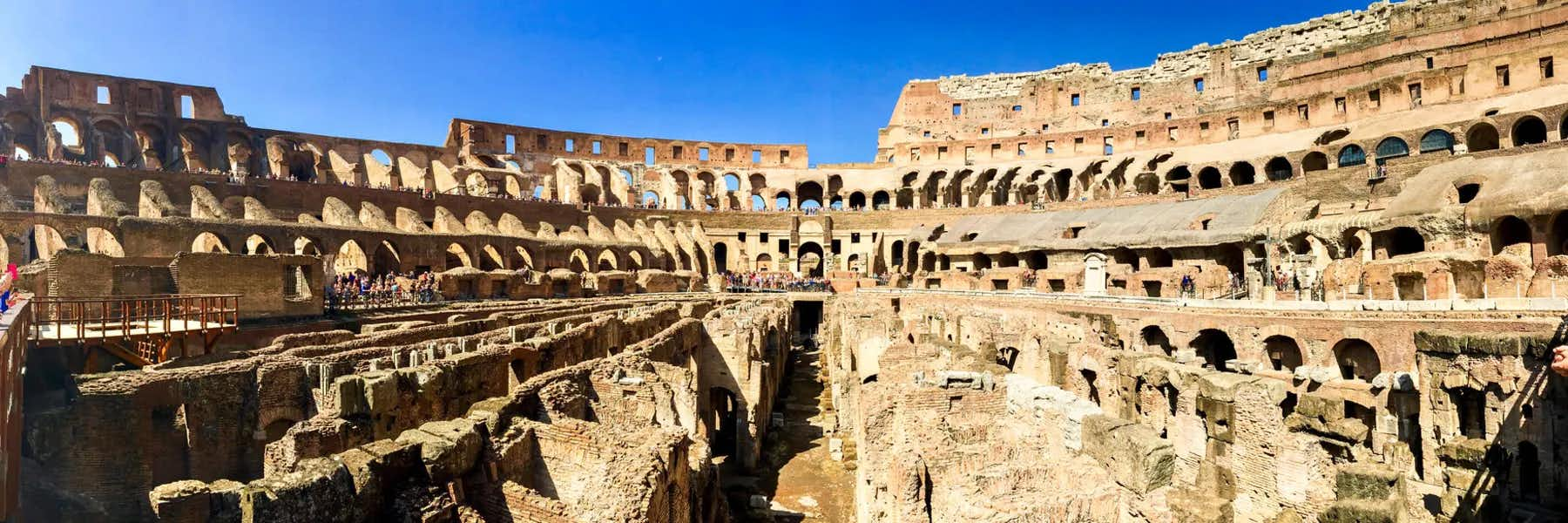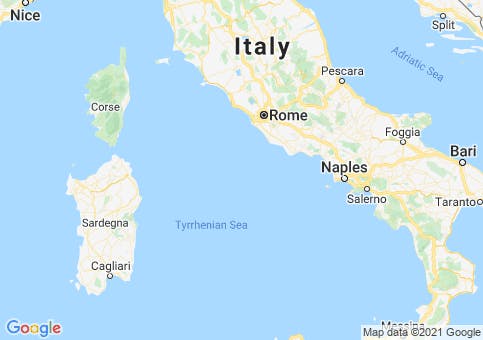As far as healthcare is concerned, Italy ranks among the World Health Organization’s top 10 countries for quality health services.
The latest available statistics put the number of doctors in Italy at 3.8 per 1,000 people, which is among the highest rates in the world. Life expectancy is relatively high, at 79.4 years for men and 84.8 years for women.
The World Health Organization ranks Italy's healthcare system as the second-best in the world. While some public hospitals are overcrowded and underfunded, this is not always the case everywhere. Mid-size cities have good facilities and shorter lines. Every town has a doctor available and a guardia medica on duty for weekend and holiday emergencies. Of course, you don’t have to rely solely on public health facilities. Like many Italians, you can avail of the parallel private medical service that caters to patients covered by private medical insurance or out-of-pocket payment.
There are private doctors and medical facilities around the country. You’ll find a variety of options in every provincial city. Private medical costs are a fraction of what they would be in the U.S., with specialists’ charges generally ranging from €75 to €150.
It is vital that visitors from the U.S. and Canada (and persons not enrolled under the National Health Plan) take out private medical insurance. If you’re relocating to Italy, you’re not going to be able to join the National Health Plan on the day you arrive. If you’re unlucky enough to need hospital treatment, you will be expected to pay full hospital charges and claim a reimbursement later from your private insurance provider. Don’t forget that you will not be able to obtain your resident’s permit without proof of health insurance.
It is also worth noting that hospitals do not generally accept payment by credit cards, though most will agree to bill patients after discharge. There are also numerous private clinics offering a wide range of medical services, but charges are generally higher than those applied by public hospitals.
Get Your Free Italy Report Today!
Get Your Free Italy Report Today!
Learn more about Italy and other countries in our daily postcard e-letter. Simply enter your email address below and we’ll send you a FREE report – Italy: Europe’s Most Seductive Country.

By submitting your email address, you will receive a free subscription to IL Postcards, The Untourist Daily and special offers from International Living and our affiliates. You can unsubscribe at any time, and we encourage you to read more about our Privacy Policy.
The National Health Plan
Italy's national health plan (Servizio Sanitario Nazionale), provides for hospital and medical benefits. In Italy, healthcare is considered a right and the national health plan is designed to provide for all Italian citizens and residents, including U.S. and Canadian citizens who are legal residents of Italy.
The plan is obligatory for those with the following types of stay permit (permesso di soggiorno):
• Subordinate work.
• Self-employment (autonomous work).
• Family reasons.
• Humanitarian reasons or political asylum.
Voluntary enrolment applies to the following:
• Managers of a company with the headquarters in Italy.
• Workers of a company with the headquarters abroad.
• Holders of stay permits valid for more than three months (such as business, artists, and the like).
• Journalists subject to Italian income tax.
When submitting an application to the local health authority in your district (Unità Sanitaria Locale [USL] or Azienda Sanità Locale [ASL], you must also provide your codice fiscale, your permesso di soggiorno, proof of ID (passport or carta d’identità), and a certificate of residence (certificato di residenza) issued by the local municipality (comune). Registration for the SSN is free.
To obtain a certificato di residenza, you must produce the appropriate visa issued by an Italian consulate abroad, your stay permit (permesso di soggiorno) from the local police station, and your registry of self and any dependents with the office of Vital Statistics (Ufficio Anagrafe) at the local town hall (comune).
If your application is accepted, you will be issued a medical registration card (tessera sanitaria). Your doctor may ask to see your tessera when filling out a prescription, and you will have to show it when you make an appointment to see a specialist or sign up for other services through the National Health Plan. You will also be asked to choose a family physician (medico di base) from a list of participating doctors. Those covered by the plan will be entitled to medical care by the selected physician. He/she will write prescriptions and request laboratory tests, X-rays, and any further consultations with specialists.
Services provided include:
• Hospital care (room and board, medical care, surgery, lab tests, and medication during hospitalization) in public hospitals or authorized clinics.
• Treatment by general practitioners, pediatricians for children up to 14 years old, and obstetricians listed in the health convention.
• Treatment by other specialists as deemed necessary. • Annual preventive care exams, such as mammograms, pap tests, and prostate exams, are included free.
• Medication prescribed by authorized physicians, within certain limitations. A “ticket fee” (a fixed charge for the cost of prescription drugs, set by the government) must be paid on certain drugs as a contribution to the medication plan. For insulin, some painkillers (although not aspirin), antibiotics, cortisones, ulcer treatments, and eye drops, the copay cost is 10%. For hormone treatments, antacids, and some anti-inflammatory drugs, the fee is 50%. Senior citizens with an annual income of less than €37,000 ($42,180), children under the age of 6, and those suffering from long-term chronic diseases pay a maximum of €4 ($4.56). In some cases, medicines may actually cost less than the official ticket price, in which case you can save money by buying them without a prescription. Subsidized medicine costs are much lower than in the U.S. for the same drugs.
• A contribution (ticket) is payable for lab tests and X-rays, provided they are performed in public hospitals or authorized outside medical facilities.
• Partial refunds are available for spectacles, orthopedic prosthesis, and phonetic and acoustic appliances such as hearing aids
Private Health Insurance in Italy
One of the most frequently asked questions by International Living readers is about medical insurance for U.S. citizens abroad. As you are probably aware, your U.S. health insurance usually does not travel with you beyond U.S. borders.
If you sign up for the National Health Plan in Italy, you will need private insurance only for those conditions, treatments, providers, and share of costs that are not covered by the SSN. Most policies offered by local Italian insurance providers provide supplementary coverage to cover this gap. Typically, they cover items such as specialist fees and private hospital treatment. However, there may be a deductible, and exclusions such as family doctor visits or medicines other than those supplied in a hospital setting. Premiums vary considerably but generally range from €1,300 to €2,300 ($1,482 to $2,622) annually for a family of four. Most Italians do not purchase private insurance, though they may opt for occasional private doctor visits as needed.
Some of the major Italian insurers include:
Healthcare Costs in Italy
Though costs vary based on a number of factors including region and whether you have private insurance or not, expats report costs as reasonable. One expat couple based in the south reports paying just $236 per year to cover their health insurance. And hospital visits are reportedly free in urgent cases. In non-urgent cases, a small co-pay may be expected.
Pharmacies and Medication
With a green cross outside the window, pharmacies usually have the same opening hours as shops: 9 a.m. to 12:30 p.m. and 3:30 p.m. to 7:30 p.m. You can visit them for minor ailments. In larger towns and cities, you’ll find a farmacia that’s open all night and others that offer 24-hour service. Their addresses are displayed outside all the local pharmacies. The more accustomed a city is to tourists, the more likely you are to find English-speaking staff. Most pharmacists speak at least some English, though. Pharmacies also act as walk-in clinics for minor health problems. They are usually the first point of medical advice for most Italians, as pharmacists have a certain level of medical training.
Pharmacists in Italy are used to consulting with patients, so if you aren’t sure what kind of medication you need or what the equivalent of an American brand is here in Italy, ask the pharmacist.
Assisted living and Nursing Care in Italy
Approximately 20% of the population is aged 65 and over, and with a life expectancy of 79.2 years for men and 84.9 years for women, the percentage will grow over the coming decades. Care for the elderly assumes a variety of forms in Italy, where it is still commonly seen as a family responsibility and social duty to look after older family members.
With the compact nature of many of Italy’s cities where services are close at hand, and the support systems of family and community in small towns, older residents can usually stay relatively autonomous longer. Indeed, in many small towns the doctor will make house calls, as will local shops to deliver groceries and other items to the elderly.
There is a growing demand for nursing homes and assisted living facilities, though. They are much more widespread in the north than in the south, where it is not uncommon for elderly parents to be cared for by the younger generations in their homes. They tend to look to in-patient nursing care only as a last resort.
Often, when additional care is needed, the family hires a badante, a home healthcare worker, so that their loved ones can stay in the comfort of their own homes. A badante is often a live-in caregiver, though some may be hired for hours when the family is at work to provide assistance. They are usually from eastern Europe, though sometimes local women have completed courses to provide this service. Costs generally range from €1,100 ($1,254) to €1,500 ($1,710) per month for a live-in caregiver; there are agencies that match caregivers to clients. Local home caregivers usually cost between €8 ($9.12) to €20 ($22.80) per hour.
Most assisted living or nursing homes (casa di risposo) are privately run, though some nursing homes are public run or state-funded. All are regulated and inspected by the region or city, and while most are paid for by the family, some have an income-based pricing structure. There are also many nursing homes administered by various orders of nuns and the Catholic church, which also provide financial assistance.
Assisted living facilities are beginning to catch on in Italy, with independent apartments for those senior citizens who don’t need extensive care, and who want to maintain their independence but with some assistance. Because of the relatively recent appearance in Italian society, they go by different names, which can lead to some confusion about the services and level of care offered. Usually called a casa albergo or communità alloggio, it may also be called a residenza assistenziale. They provide individual apartments or suites with nursing staff on-site and medical assistance as needed, dining rooms, common rooms, organized activities, cleaning service and often other amenities like a gym, hair salon, bocce court, social and cultural functions, and a pharmacy. Prices vary based on the level of service, the facilities, and amenities, but the median cost is €1,620 ($1,847) per month.
Common FAQ’s About Healthcare in Italy
Is healthcare in Italy good?
Italy consistently ranks among the World Health Organization’s top 10 countries for quality health services. Italy has a very high rate of doctors pep population currently standing at 3.8 doctors per 1,000 people.
Is health care free in Italy?
In Italy, healthcare is considered a right and the national health plan (Servizio Sanitario Nazionale) is designed to provide free healthcare for all Italian citizens and residents. This would also apply to residents orignally from the U.S. and Canada.
Where does Italy rank in healthcare?
The WHO (World Healthcare Organization) ranked Italy as the 2nd best country in the world in terms of overall healthcare in 2020.
How is healthcare financed in Italy?
Italy's comprehensive healthcare system is free of charge at the point of delivery. The system is financied through federal and regional general taxation such as income tax.
Get Your Free Italy Report Today!
Get Your Free Italy Report Today!
Learn more about Italy and other countries in our daily postcard e-letter. Simply enter your email address below and we’ll send you a FREE report – Italy: Europe’s Most Seductive Country.

By submitting your email address, you will receive a free subscription to IL Postcards, The Untourist Daily and special offers from International Living and our affiliates. You can unsubscribe at any time, and we encourage you to read more about our Privacy Policy.













